Menus
- The best super athletes
- BMW HP4 against Ducati 1199 Panigale R
- 194 kilograms of the Ducati Panigale R as best in class
- Stalemate at a high level in the brake test
- BMW HP4 absorbs bumps
- Conclusion
- BMW S 1000 RR
- Ducati 1199 Panigale RS
- BMW HP4
- Ducati 1199 Panigale R.
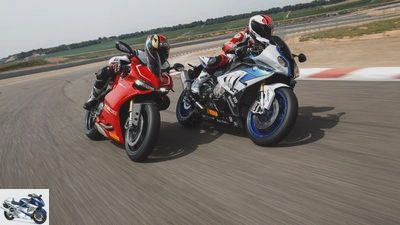
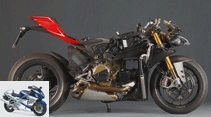
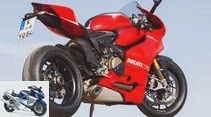
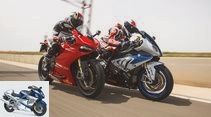

49 photos
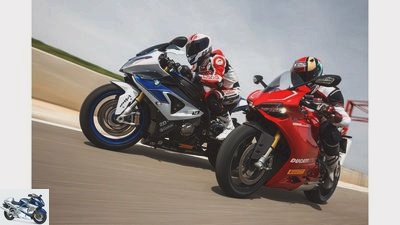
1/49
Exceptional in terms of performance and chassis: Ducati Panigale R and BMW HP4 in the test.
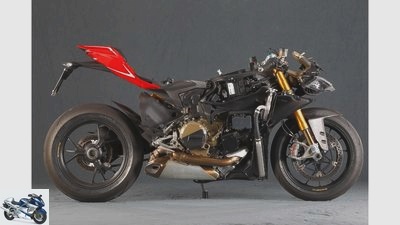
2/49
The defoliated Ducati looks like a power cube on two wheels. Behind the lower cooler there is a fan that extracts the warm air.
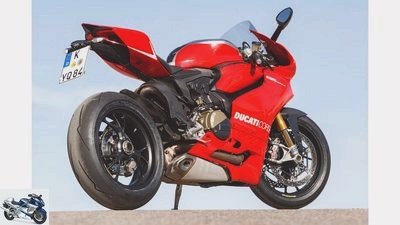
3/49
Ducati Panigale R.
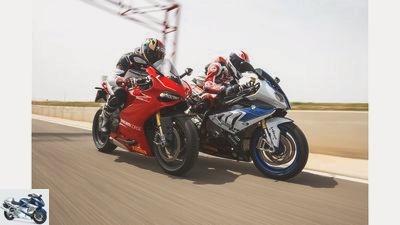
4/49
Row four versus Vau-Zwo, bridge frame versus monocoque, two-arm versus one-sided swing arm. Sports concepts could hardly be more different.
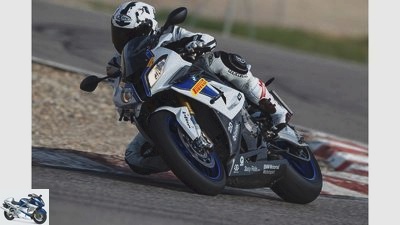
5/49
Thanks to DDC, the BMW is much quieter without the chassis showing undue hardness.
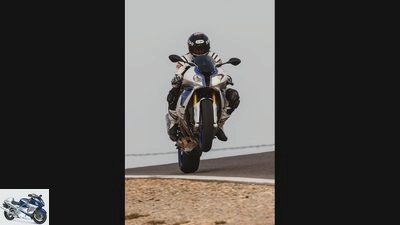
6/49
BMW HP4.
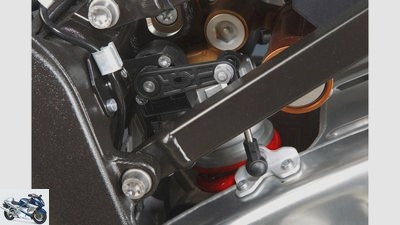
7/49
The spring travel sensor on the shock absorber informs the DDC control unit about the compression and rebound movements.
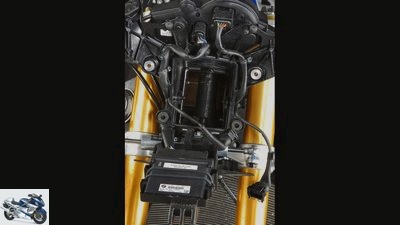
8/49
The BMW sips the air you breathe directly through the fairing nose and the steering head. In front of it sits the control unit of the partially active chassis (DDC).
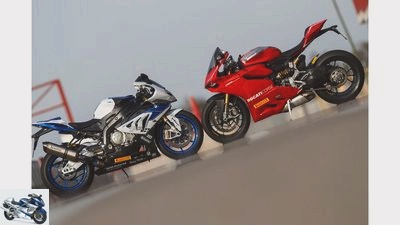
9/49
BMW HP4 and Ducati Panigale R.
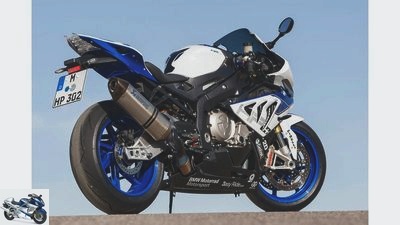
10/49
BMW HP4.
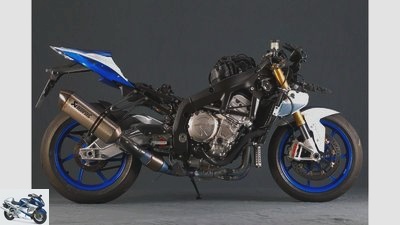
11/49
Four-cylinder in the bridge chassis, inclined slightly forward, with the airbox enthroned above it. Classic structure based on the Japanese model.
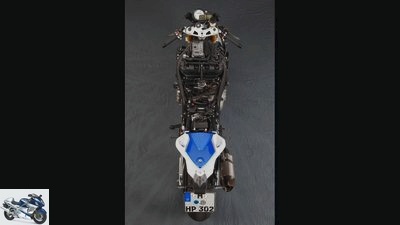
12/49
The DDC computer sits in front of the ram-air duct, the engine control unit on the airbox, and the rear frame houses the ABS control unit, battery and the traction control sensor box. The tank takes up the place in front of the airbox. As tight as the bridge frame hugs the cylinder head, it can’t manage the narrow waist of a V2.

jkuenstle.de
13/49
The DDC computer sits in front of the ram-air duct, the engine control unit on the airbox, the rear frame houses the ABS control unit, battery and the traction control sensor box. The tank takes up the place in front of the airbox. As tight as the bridge frame hugs the cylinder head, it can’t manage the narrow waist of a V2.
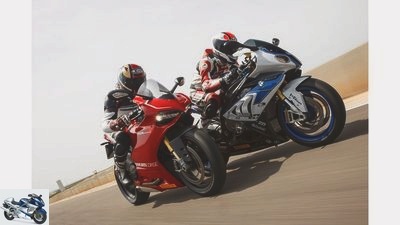
14/49
Ducati Panigale R and BMW HP4.
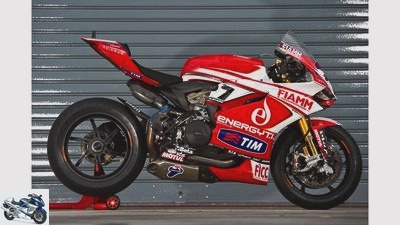
15/49
Factory machines: The Panigale RS does not yet have the power of its predecessor. However, the regulations allow changes in weight, air restrictor and thus performance.
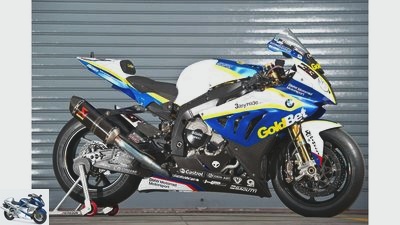
16/49
Factory machines: The BMW has finally made it to the top of the World Championship. Like last season, Marco Melandri is one of the serious title contenders this year.
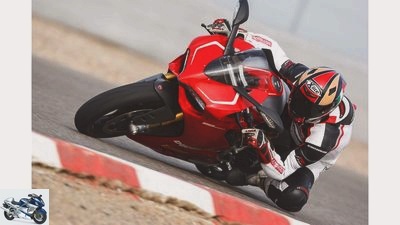
17/49
The Ducati stands out especially at the corner entrance and in chicanes.
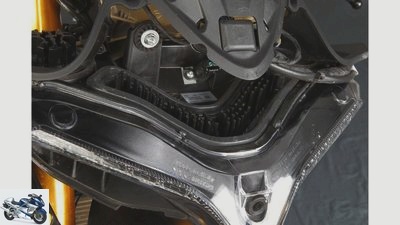
18/49
The GPS antenna for the recording is located in the nose of the fairing, and the intake openings under the headlight. Above: cooling elements of the LED headlights.

19/49
Elliptical throttle valves, two injection nozzles each. One sits in the middle above and atomizes the fuel directly into the intake port.
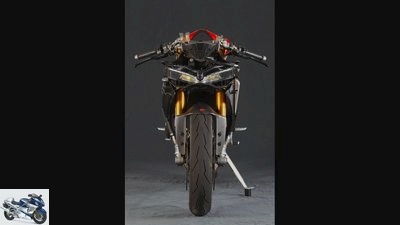
20/49
Crouched, with wide flared handlebars and a wonderfully slim silhouette. The monocoque serves as an airbox, which is sealed at the top by the tank. The control unit for traction control sits in the rubber rear frame.
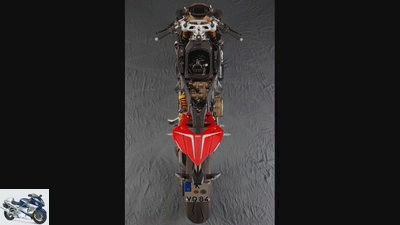
21/49
Crouched, with wide flared handlebars and a wonderfully narrow silhouette. The monocoque serves as an airbox, which is sealed at the top by the tank. The control unit for traction control sits in the rubber rear frame.
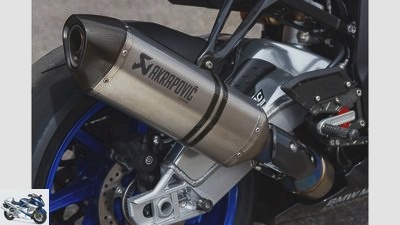
22/49
Ducati 1199 Panigale R and BMW HP4 in the MOTORRAD comparison test.
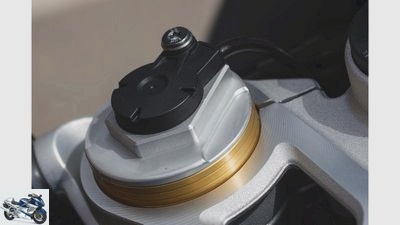
23/49
Ducati 1199 Panigale R and BMW HP4 in the MOTORRAD comparison test.
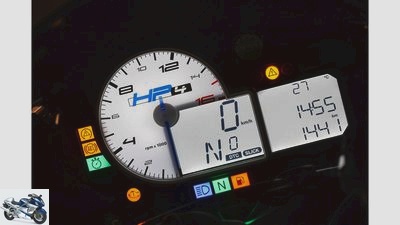
24/49
Ducati 1199 Panigale R and BMW HP4 in the MOTORRAD comparison test.
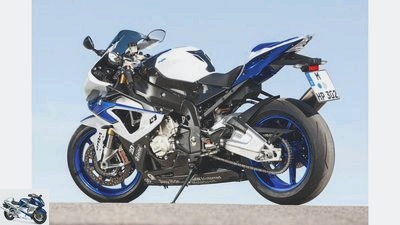
25/49
Ducati 1199 Panigale R and BMW HP4 in the MOTORRAD comparison test.
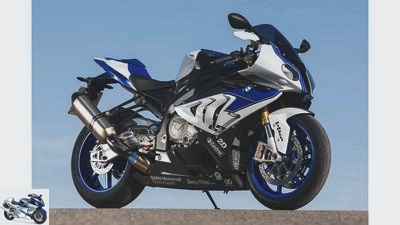
26/49
Ducati 1199 Panigale R and BMW HP4 in the MOTORRAD comparison test.
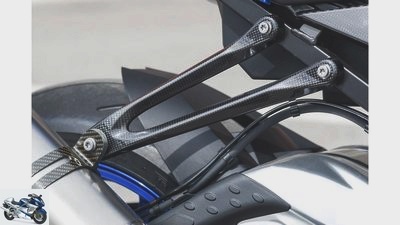
27/49
Ducati 1199 Panigale R and BMW HP4 in the MOTORRAD comparison test.
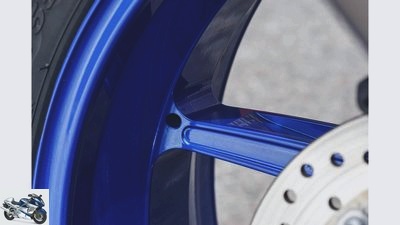
28/49
Ducati 1199 Panigale R and BMW HP4 in the MOTORRAD comparison test.
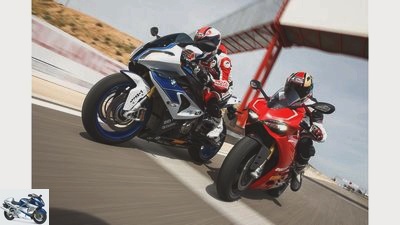
29/49
Ducati 1199 Panigale R and BMW HP4 in the MOTORRAD comparison test.
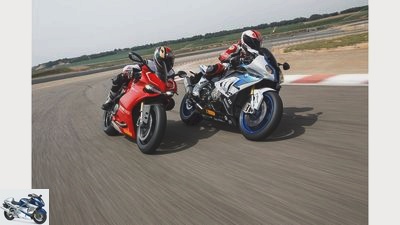
30/49
Ducati 1199 Panigale R and BMW HP4 in the MOTORRAD comparison test.

31/49
Ducati 1199 Panigale R and BMW HP4 in the MOTORRAD comparison test.
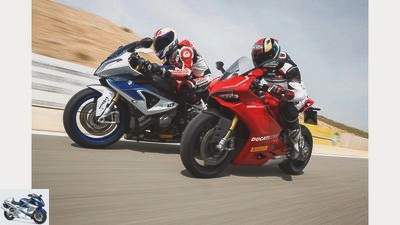
32/49
Ducati 1199 Panigale R and BMW HP4 in the MOTORRAD comparison test.
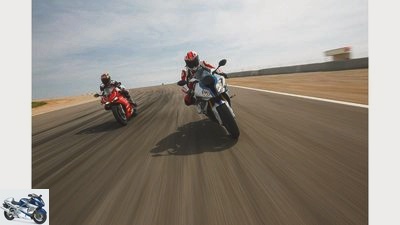
33/49
Ducati 1199 Panigale R and BMW HP4 in the MOTORRAD comparison test.
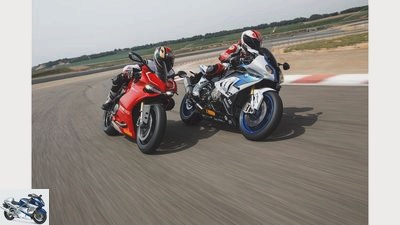
34/49
Ducati 1199 Panigale R and BMW HP4 in the MOTORRAD comparison test.

35/49
Ducati 1199 Panigale R and BMW HP4 in the MOTORRAD comparison test.
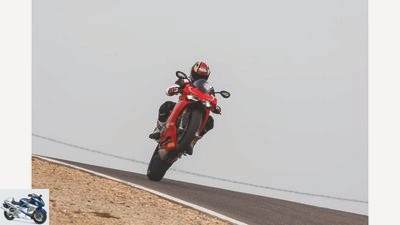
36/49
Ducati 1199 Panigale R and BMW HP4 in the MOTORRAD comparison test.

37/49
Ducati 1199 Panigale R and BMW HP4 in the MOTORRAD comparison test.
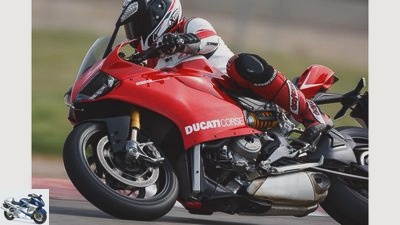
38/49
Ducati 1199 Panigale R and BMW HP4 in the MOTORRAD comparison test.
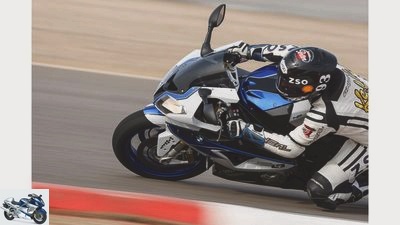
39/49
Ducati 1199 Panigale R and BMW HP4 in the MOTORRAD comparison test.

40/49
Ducati 1199 Panigale R and BMW HP4 in the MOTORRAD comparison test.
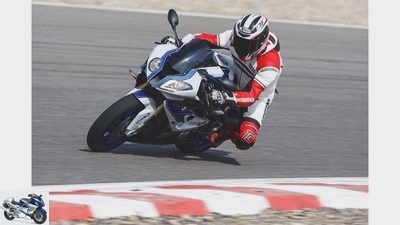
41/49
Ducati 1199 Panigale R and BMW HP4 in the MOTORRAD comparison test.
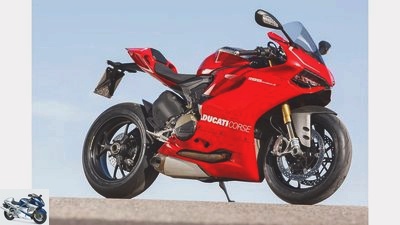
42/49
Ducati 1199 Panigale R and BMW HP4 in the MOTORRAD comparison test.
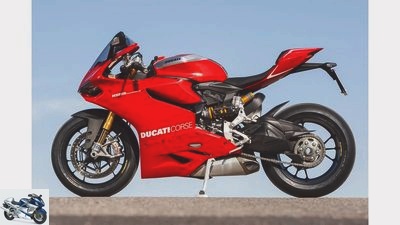
43/49
Ducati 1199 Panigale R and BMW HP4 in the MOTORRAD comparison test.
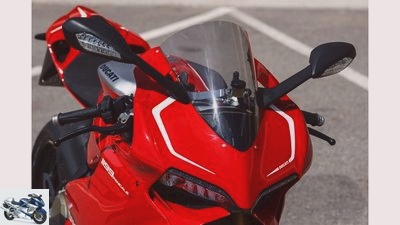
44/49
Ducati 1199 Panigale R and BMW HP4 in the MOTORRAD comparison test.
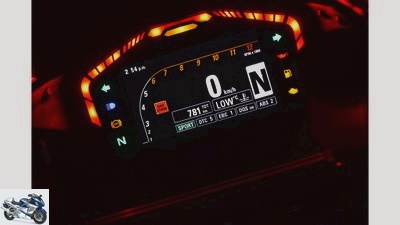
45/49
Ducati 1199 Panigale R and BMW HP4 in the MOTORRAD comparison test.
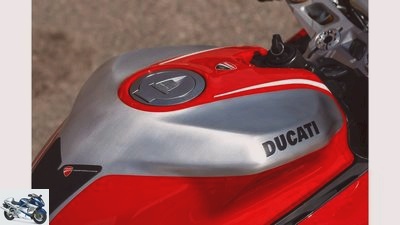
46/49
Ducati 1199 Panigale R and BMW HP4 in the MOTORRAD comparison test.

47/49
Ducati 1199 Panigale R and BMW HP4 in the MOTORRAD comparison test.
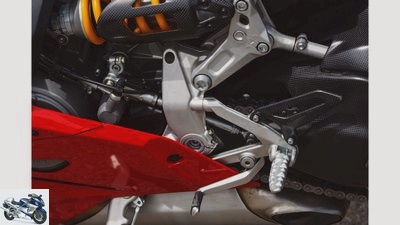
48/49
Ducati 1199 Panigale R and BMW HP4 in the MOTORRAD comparison test.
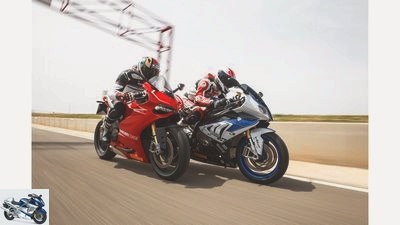
49/49
Ducati 1199 Panigale R and BMW HP4 in the MOTORRAD comparison test.
BMW HP4 and Ducati 1199 Panigale R in comparison test
The best super athletes
Ducati Panigale R and BMW HP4 represent the most highly developed representatives of the two- and four-cylinder species. They are exceptional in terms of performance and chassis. A comparison on both sides of the racetrack.
BMW HP4 against Ducati 1199 Panigale R
The story is known. In 2009, BMW shocked the competition with the S 1000 RR because it not only rammed a huge pillar into the ground in terms of performance, but also raised the electronic driving aids to a level previously unknown. D.ucati fearlessly followed suit with the Panigale. With a completely new framework concept and a V2 consistently designed for maximum performance, the Italians not only accepted the challenge. With electronically adjustable spring elements, they were even a step ahead of the competition. But only for a short time.
Buy complete article
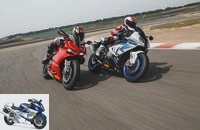
BMW HP4 and Ducati 1199 Panigale R in comparison test
The best super athletes
They pause within sight of the 200 hp wall
As if the Bavarians had expected this step, they pulled the next ace up their sleeve with the BMW HP4: a semi-active chassis (DDC) that adjusts the damping depending on the condition of the road. Ducati countered with the Ducati 1199 Panigale R, turning even higher, more speed greedy, with titanium connecting rods and less flywheel, plus an adjustable pivot point.
In the meantime, the competition for performance seems to have rested, and the manufacturers remain within sight of the 200-hp wall. The focus of development has evidently shifted to electronics. Electronic throttle, wheelie and traction control, racing ABS, adjustable engine brakes. All of this is part of good manners today. The walk to the photo studio shows the differences under the plastic dress, the exchange of blows on the Spanish racetrack in Alcarràs, who has the better overall package BMW HP4 or Ducati 1199 Panigale R..
As different as the concepts, the difference in seating is great. The handlebars of the Ducati 1199 Panigale R are low and wide, the seat upholstery is pleasantly firm and grippy, and the knee angle is relatively open. On the BMW HP4, the more cranked handlebar stubs sit higher, the legs are angled a little more, and the crumple seat cushion is softer. German cosiness meets Cuore sportivo. Nearly. Because the cosiness is over quickly. With 191 (Ducati) and 200 HP (BMW) respectively, not a single eye remains dry on the Alcarràs racetrack.
Huge, as the Ducati twin shows. Compared to the Panigale S with titanium connecting rods, lower flywheel mass and revised mapping, conditioned for spontaneous and energetic revving, thanks to a shorter gear ratio, trimmed for better torque, the Ducati 1199 Panigale R makes the numerous second-gear curves in Alcarràs little trouble. Where the Panigale S (MOTORRAD 12/2013) was still in a performance gap, the R moves forward tightly. Such sensitivities are largely irrelevant to the BMW HP4. It takes the curves as they come, pushes steadily and unstoppably, always and everywhere. And the explosive force that it unfolds over the last 2000 revolutions continues to take your breath away.
194 kilograms of the Ducati Panigale R as best in class
The effort that the Munich-based company put into the BMW HP4 for this monumental combination of a broad range of performance and top performance is, of course, enormous: refined mapping and Akrapovic titanium exhaust system, knock sensors, but above all variable intake funnels that release short intake paths at 11200 rpm to promote performance, and butterfly valves in the interference tubes between the manifolds provide exemplary power and torque curves. By contrast, Ducati is comparatively conventional when it comes to searching for performance.
BMW HP4 and Ducati Panigale R.
The Ducati 1199 Panigale R, with a huge 112 millimeter bore and 60.8 millimeter stroke, is extremely short-stroke and therefore more speed-greedy than any other athlete. Huge oval throttle valves with centrally placed shower injection nozzles, wide-open intake throats and maximum-sized intake valves are the proven ingredients for high performance at high speeds – with losses in the lower area. In addition, the V2 weighs just 58.8 kilos, the crankshaft 4.5 kilos (BMW: 62.3 / 7.5 kg). In general, the Italians are masters of lightweight construction. The 194 kilograms of the Panigale R are best in class.
Under ex-World Championship driver Christian Kellner, the Ducati 1199 Panigale R achieved almost exactly the same top speed as the BMW HP4 in the hunt for times. At the end of the home straight in Alcarràs, the BMW is only marginally ahead with 258 to 256 km / h. When braking into the home straight, there is also almost a tie with 224 to 222 km / h.
Nevertheless, the BMW HP4 distanced the Ducati 1199 Panigale R by more than half a second with 1.40.13 min to 1.40.73 min. In every section of the route, it puts tenths of a tenth between itself and the Ducati.
In the photo studio, a look under the cladding shows that the BMW HP4 and Ducati 1199 Panigale R are taking different paths in their search for optimal balance and weight distribution. With the Ducati, practically all components such as heat exchangers, ABS pressure modulators or all control units up to the under-engine exhaust system are grouped around the vehicle’s center of gravity. As with the 916, there is a tank on the airbox that closes it at the top.
BMW used a conventionally laterally laid four-in-one exhaust. The tank sits directly in front of the driver’s stomach and is pulled under the seat bench, the airbox fills the front part of the dummy tank. The various control units for traction control, ABS or DDC (Dynamic Damping Control) are distributed from the nose of the BMW HP4 to the rear.
Stalemate at a high level in the brake test
When braking, there is a stalemate between the BMW HP4 and Ducati 1199 Panigale R at a breathtakingly high level neither burn anything.
Subscribe to MOTORRAD videos on Youtube
Four-cylinder in the bridge chassis, inclined slightly forward, with the airbox enthroned above it. Classic structure based on the Japanese model.
The BMW HP4 has the decisive advantage with its semi-active chassis. Depending on the driving mode, the control unit provides a certain basic setting that the driver can fine-tune. A spring travel sensor on the shock absorber signals the movements of the hindquarters to the control unit, which then adapts the damping via electromagnetic valves. However, the computer also includes other data such as speed, brake pressure, lean angle or the speed at which the lean angle changes. And simultaneously adjusts the fork damping.
In the Ducati 1199 Panigale R, the spring elements also have electromagnetic damper valves. The coordination is done manually via the menu in the cockpit, which, so to speak, replaces the screwdriver. Your suspension elements cannot react to bumps by adjusting the setting.
With a little more compression damping, the fork is quickly adapted to the conditions of the undulating slope. The hard-tuned shock absorber doesn’t make it that easy. When accelerating out, the hindquarters pumps again and again, the Ducati 1199 Panigale R takes the restlessness with it down to the straight. Attenuation on, attenuation down – this bad habit could be alleviated, but not turned off. It is true that turning the variable pivot point into the lowest position brings relief. But the lively handling lacks a little shine. And because Christian Kellner gently grips the Panigale at the exit of the curve with his rounded driving style and thus largely ensures calm on deck, the swing arm remains in the basic position. Especially since many corners require late, precise turning, and that is just a tad better. You have to accept that the many bumps are rudely passed through to the driver, but this is compensated for by the flawless handling. But the BMW HP4 also does not spoil in the curvy sections.
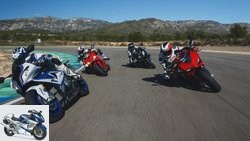
Super athlete
Test: BMW S 1000 RR against HP4 and Ducati 1199 Panigale against Panigale S.
Race track comparison: BMW and Ducati super sports cars
read more
BMW HP4 absorbs bumps
The specially assembled Pirelli slicks from the Superbike World Championship make the HP4 a breathtaking precision tool at the entrance to the curve and bring it very close to the Ducati in terms of handling. Above all, however, the track is unrecognizable on the BMW HP4. Where, one wonders, have all the bumps gone? The semi-active chassis (DDC) literally absorbs most of the bumps. Hardly any edge mauled the back or wrists, distracting the pilot.
In addition, the automatic gearshift and the traction control equipped with lean angle sensors work even more smoothly than the Ducati slip control, which is based on acceleration sensors and algorithms and also operates at a high level. And so the BMW HP4 of the Ducati 1199 Panigale R hurries tenth by tenth. All in all, a lead of half a second might not sound like a lot, but over ten laps it does. In addition, the time spent on the BMW is less stressful. But the Panigale R is still at the beginning of its career and development and is already very close to the class leader. In terms of price, however, the two worlds separate. A difference of 11,000 euros – in the case of the basic HP4 – is steep, but is put into perspective for the technology freak with the prospect of moving the fieriest twin of all time and a technically unique concept. For everyone else, it’s almost unbelievable what the BMW offers for the money.
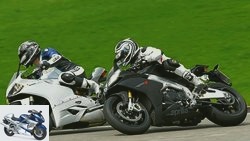
motorcycles
Comparison test: Ducati 1199 Panigale, Aprilia RSV4 R APRC ABS
Italian superbikes – the basic versions
read more
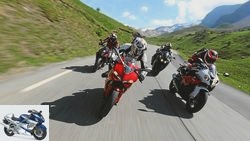
Super athlete
Alpine Masters 2012: Athletes
The great athlete test in the Alps
read more

Super athlete
The evolution of the Ducati 1199 Panigale
The new super sports car from Ducati
read more
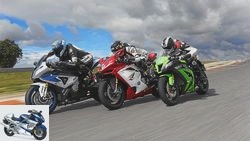
Super athlete
BMW HP4, Kawasaki ZX-10R, MV Agusta F4 RR
Top super sports cars from BMW, Kawasaki and MV Agusta
read more
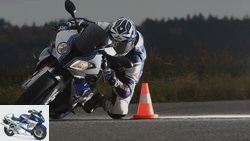
Super athlete
The further development of the BMW S 1000 RR
BMW HP4 in the top test
read more
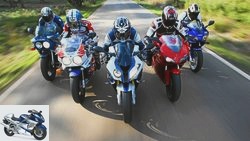
Super athlete
Suzuki, Honda, Yamaha, Ducati and BMW super sports cars
Generations of athletes from three decades
read more
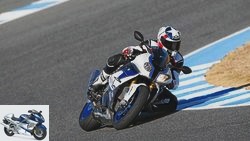
Super athlete
BMW HP4 single test
High performance: at full speed with the BMW HP4
read more
Conclusion
Row four versus Vau-Zwo, bridge frame versus monocoque, two-arm versus one-sided swing arm. Sports concepts could hardly be more different.
BMW HP4
Even in its fourth year, the BMW HP4 is still the measure of all things. Still amazed at how it combines outstanding performance and drivability with full suitability for everyday use. In the form of the HP4, it has raised the bar even higher with the semi-active chassis. Certainly you don’t need 200 HP or concentrated electronics to be happy. The technology is always fascinating.
Ducati 1199 Panigale R.
Engine modifications and a shorter gear ratio make the Ducati 1199 Panigale R even livelier and more aggressive. Ducati’s courage to uncompromising when it comes to the engine and chassis concept deserves respect anyway. When it comes to tuning the chassis, having a knowledgeable hand is certainly not a disadvantage. The adjustable pivot point was a step in the right direction. In terms of performance, however, the semi-active system of the BMW HP4 is currently ahead. Let’s see when Ducati will follow suit.
BMW S 1000 RR
Factory machines: The BMW has finally made it to the top of the World Championship. Like last season, Marco Melandri is one of the serious title contenders this year.
Strictly speaking, this comparison is not entirely correct, because the BMW HP4 is currently only used in the Superstock World Championship, but not in the Superbike World Championship. There the works team in the World Championship with Marco Melandri and Chaz Davies – still – relies on the S 1000 RR. The 225 hp that BMW specifies are likely to be at the lower end of the truth in view of top speeds of over 330 km / h in Monza. It is decelerated with 328 mm large, 6 mm thick brake discs. The Ohlins Racing fork is in bridges with variable offset. However, BMW is silent about the area in which the overrun can be changed.
When BMW entered the Superbike World Championship, the main points of criticism of the S 1000 RR were the power delivery as well as tire durability and traction over the full race distance. For the latter, innumerable arm lengths and stiffnesses were experimented with. In the meantime, it seems to have found the right part with a longer swing arm for more traction. And the performance development seems to be under control, as Melandri impressively demonstrated in Monza with a victory and second place.
Ducati 1199 Panigale RS
Factory machines: The Panigale RS does not yet have the power of its predecessor. However, the regulations allow changes in weight, air restrictor and thus performance.
Although the Panigale was already on the market in 2012, the works team with Carlos Checa and Davide Giugliano put their trust in the – still victorious – 1098 R. But the Ducati 1199 Panigale R has been used since this season. The factory superbike turns over 12500 rpm (series: 12000 rpm) and is said to produce “over 200 hp at 11500 rpm”. Ducati is not more specific. In view of the 15 km / h top speed disadvantage compared to Aprilia and BMW, the performance deficit should be at least 15 hp. 210 hp at 11,000 rpm were already specified for the 1098 R.
Obviously, the air restrictor makes the short-stroke concept – still – a blunt weapon. But the 1098 R also struggled with a performance disadvantage – and still won. When it comes to the chassis, Checa also relies on an Ohlins racing fork. The caster can be varied in a range of 95 to 105 mm using fork bridges with variable offset. The steering head angle can be changed by one degree and the wheelbase by ten millimeters.
BMW HP4
BMW HP4.
engine
Water-cooled four-cylinder four-stroke in-line engine, two overhead, chain-driven camshafts, four valves per cylinder, drag levers, wet sump lubrication, injection, Ø 48 mm, regulated catalytic converter, 350 W alternator, 12 V / 7 Ah battery, mechanically operated multi-disc oil bath clutch (Anti-hopping), six-speed gearbox, chain, secondary ratio 45:17.
Bore x stroke 80.0 x 49.7 mm
Displacement 999 cm³
Compression ratio 13.0: 1
Rated output 142.0 kW (193 hp) at 13,000 rpm
Max. Torque 112 Nm at 9750 rpm
landing gear
Bridge frame made of aluminum, upside-down fork, Ø 46 mm, -steering damper, adjustable spring base, electronically adjustable – traction and compression damping, two-arm swing arm made of aluminum, central spring strut with lever system, adjustable spring base, electronically adjustable rebound and compression damping, double disc brake at the front, Ø 320 mm, four-piston fixed calipers, rear disc brake, Ø 220 mm, single-piston floating caliper, composite brake, ABS, traction control.
Forged aluminum wheels 3.50 x 17; 6.00 x 17
Tires 120/70 ZR 17; 200/55 ZR 17
Tires in the test Pirelli Supercorsa SP, front “C”
Dimensions + weights
Wheelbase 1423 mm, steering head angle 66.0 degrees, caster 99 mm, spring travel f / r 120/130 mm, seat height * 810 mm, weight with a full tank * 203 kg, payload * 205 kg, tank capacity / reserve 17.5 / 4.0 liters.
Service data
Service intervals 10000 km
Colors blue / white
Price 20,500 euros
Price test motorcycle *** 24,750 euros
Additional costs around 269 euros
Readings
Performance
Top speed ** 299 km / h
acceleration
0-100 km / h 3.2 sec
0-140 km / h 4.6 sec
0-200 km / h 7.2 sec
Draft
60-100 km / h 3.3 sec
100-140 km / h 2.9 sec
140-180 km / h 2.8 sec
Speedometer deviation effective
(Display 50/100) 48/98 km / h
Fuel type super
Furnishing
– four driving modes (Rain, Sport, Race, Slick)
– ABS (can be switched off) with lift detection on the rear wheel (not in slick mode)
– Wheelie control
– Launch Control
– Traction control, lap timer
– Swing arm pivot point adjustable
– Adjustable rear height
– semi-active chassis (DDC)
– Automatic switch
Ducati 1199 Panigale R.
The Ducati stands out especially at the corner entrance and in chicanes.
engine
Water-cooled two-cylinder four-stroke 90-degree V-engine, two overhead, chain-driven camshafts, four valves per cylinder, desmodromic actuation, wet sump lubrication, injection, Ø 68 mm, regulated catalytic converter, 440 W alternator, 12 V / 6 Ah battery, Hydraulically operated multi-disc oil bath clutch (anti-hopping), six-speed gearbox, O-ring chain, secondary ratio 41:15.
Bore x stroke 112.0 x 60.8 mm
Cubic capacity 1198 cm³
Compression ratio 12.5: 1
Rated output 143.0 kW (195 hp) at 10750 rpm
Max. Torque 135 Nm at 9000 rpm
landing gear
Monocoque made of aluminum, up-side-down fork, Ø 43 mm, hydromechanically adjustable spring base, electronically adjustable rebound and compression damping, single-sided swing arm made of aluminum, central spring strut, lying, with lever system, electronically adjustable spring base, rebound and compression damping, double disc brake at the front, Ø 330 mm, four-piston fixed calipers, rear disc brake, Ø 245 mm, two-piston fixed calipers, ABS, traction control.
Forged aluminum wheels 3.50 x 17; 6.00 x 17
Tires 120/70 ZR 17; 200/55 ZR 17
Pirelli Supercorsa SP tires tested
Dimensions + weight
Wheelbase 1437 mm, steering head angle 65.5 degrees, caster 100 mm, spring travel f / r 120/130 mm, seat height * 820 mm, weight with a full tank * 194 kg, tank capacity 17.0 liters.
Service data
Service intervals 12,000 km
Two year guarantee
One year mobility guarantee
Red color
Price 31690 euros
Additional costs around 305 euros
Readings
Performance
Top speed1 296 km / h
acceleration
0-100 km / h 3.0 sec
0-140 km / h 4.6 sec
0-200 km / h 7.6 sec
Draft
60-100 km / h 3.2 sec
100-140 km / h 3.3 sec
140-180 km / h 3.9 sec
Speedometer deviation
effective (display 50/100) 48/98 km / h
Fuel type super
Furnishing
– three driving modes (Rain, Sport, Race)
– ABS (can be switched off) with lift detection on the rear wheel (not Race)
– Traction control, lap timer
– Engine braking torque and response adjustable
– Swing arm pivot point adjustable
– Adjustable strut deflection progression
– electronically adjustable spring elements
Related articles
-
Ducati 1199 Panigale S – The new super sports car
Ducati driving report: Ducati 1199 Panigale S The new super sports car from Ducati Your task is clearly defined: be fast on the racetrack. For…
-
Italo athletes in comparison: Aprilia RSV4 Factory, Ducati Panigale S and MV Agusta F4 R.
www. 26 pictures 1/26 Thanks to the changed mounting position of the engine compared to the 1198, the Panigale now has a significantly longer …
-
Ducati 999 S and Ducati 1199 Panigale S in comparison test
fact 14 pictures fact 1/14 The rattling through town with the Ducati 999 S is deep in the memory. But honestly, there is the current Ducati …
-
Manufacturer 5 photos Manufacturer 1/5 “At Ducati, an R version traditionally stands for the best available technology from the racing sector,” stated…
-
Ducati 1299 Panigale S and Ducati 1199 S in comparison test
fact 29 pictures fact 1/29 The two sisters only look like identical twins at first glance … fact 2/29 wheelbase (1437 mm), seat height (830 mm) …
-
Ducati 1199 Panigale, EBR 1190 RX and KTM 1190 RC8 R.
Jahn 32 pictures Jahn 1/32 Cloud-free sky, glorious sunshine, the rumble of thunder: Three mighty V2 superbikes race down the slopes of Oschersleben …
-
Ducati 1199 Panigale S versus KTM RC8 R in comparison test
23 pictures 1/23 The two super sports two-cylinder, KTM RC8 R and Ducati 1199 Panigale S, in a comparison test. You are the…
-
Ducati 1199 Panigale S in the top test
15 pictures 1/15 Grim look: LED headlights are being used for the first time in a motorcycle. 2/15 Ducati 1199 …
-
Ducati 899 Panigale and Ducati 1199 Panigale in the test
www. 23 pictures 1/23 4200 Euro, 47 HP, three kilograms – in order of importance these are the most striking …
-
Ducati 11 pictures Ducati 1/11 Freshly presented at the IAA: the new Ducati 899 Panigale. Ducati 2/11 The Ducati 899 Panigale is supposed to bridge the gap between …